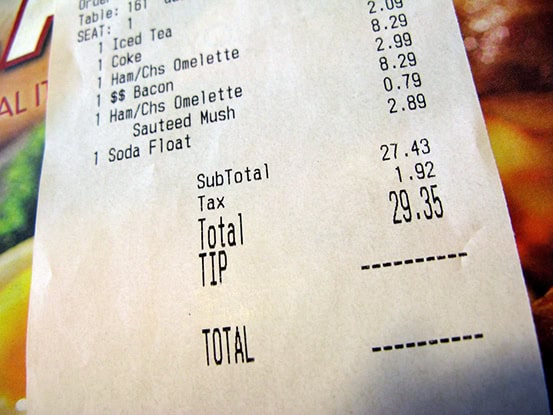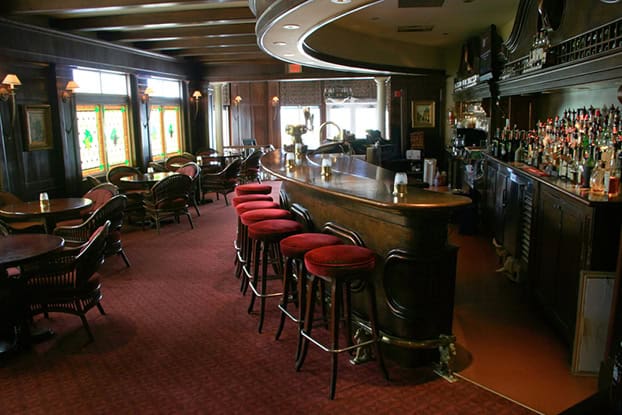10 Restaurant Concepts And How To Choose One For Your Business
In this article, the food-service-management experts at Sling discuss the popula...

As a restaurant owner or manager, you have an important decision to make: Which is better for your team and your business, a service charge or tips?
Both have benefits and drawbacks, and the best choice for your operation will depend on a variety of factors unique to the restaurant industry.
In this article, we discuss the key differences between service charges and tips, examine the benefits and drawbacks of both, and consider the factors that will affect your decision one way or the other.

A service charge is a fee — typically a percentage of the total cost — automatically added to a customer’s bill when it’s time to pay.
Most service charges range from 10% to 20% for regular service, but the numbers can go higher for special situations, such as large parties and extra amenities (e.g., delivery fees, room service charges, bottle service, etc.).
When it comes to service charges, there are two important things to remember. A service charge is:
As an example of this last point, you may decide to use a portion of the service charge to supplement server and staff wages while using the remainder to fund a long-term business goal.
A tip is an amount of money — again, typically a percentage of the total cost — given to someone as a reward for their services. In most cases, tipping is entirely optional (it’s not required by law) and is dependent on how well the employee executes their job.
In the United States, the standard range for tipping is 15% to 20%, with 20% reserved for very good service.
There are two important things to remember about tips. A tip is:
For example, a customer may tip $20 on a $100 bill. Unless your restaurant has a tip pooling program, that extra $20 goes directly into the server’s pocket.

One of the main benefits of implementing a service charge vs. a tip is predictable revenue for the business.
The service charge makes it much easier to plan payroll days, weeks, and months into the future and to create (and stick to) a budget that keeps your business in the black.
With a service charge in place, employees can rely on a more consistent income stream, regardless of customer tipping habits.
Much like it does for your business, this consistency makes it easier for employees to create a budget and plan for their own future needs and expenses.
Some customers may have a negative perception of automatic service charges and would be less likely to return to a restaurant that used them.
Similarly, customers may perceive the service charge as an additional cost, which indicates that they don’t have to leave a tip for their server.
In some areas, there may be specific regulations regarding service charges, including how management has to disclose them and how they’re allowed to divide and distribute them.
These legal considerations can be a major factor in the decision-making process when it comes to deciding on a service charge vs. a tip.
One of the main benefits of implementing a tipping system is the potential for higher earnings through good service.
If employees understand that excellent customer service has a higher chance of eliciting a bigger tip, they’ll likely be more motivated to give their guests as much attention as possible.
A tipping system also gives customers more flexibility to express their satisfaction with how well an employee did their job.
Similarly, a tipping system provides lower upfront costs for the customer (i.e., the total bill reflects only the food and beverage costs). Depending on the type of restaurant you operate, this can be a benefit for your customers.
For employees, tipping can create an inconsistent income stream that fluctuates significantly based on customer habits and attitudes. This can make it difficult for employees who rely on tips to budget and find financial security.
Similarly, a tipping system provides unpredictable revenue for the business and makes it more difficult to predict staff compensation and to budget income to cover those costs.
When making your decision about whether to implement tipping or a service charge, it’s important to consider all of the above benefits and drawbacks so you can make the right choice for your employees and your business.
But the benefits and drawbacks aren’t the only things to take into account. Other factors can have a dramatic effect on which system you choose for your restaurant.

One of the main factors to consider when choosing whether to implement a service charge or encourage tipping is the type of restaurant you run.
Fine dining establishments may have a higher tipping culture and may even be able to handle both a service charge and a tip. A fast food establishment, on the other hand, may choose not to implement either.
Another factor to consider is the target clientele your business serves. Upscale diners may be more likely to tip well or not blink an eye at an automatic service charge. Drive-thru diners, on the other hand, may perceive both tips and service charges as unfair.
Local tipping culture also comes into play here.
Some areas have higher tipping expectations than other areas, so be sure to research what’s common in your location so that your restaurant isn’t over- or under-charging.
Your business goals and strategy go a long way toward dictating whether a service charge or a tipping system (or both) is right for your business.
Take the time to examine all aspects of your operation, including:
As you consider both systems, evaluate how each one will affect employee motivation and team morale.
Does one stand out from the other as providing a better, more consistent source of income for your staff? Can that system increase motivation while still providing for the needs of the business?
It’s essential to abide by local labor laws and regulations — especially when it comes to service charges vs. tips.
Some areas have specific laws about which one is allowed, while other areas focus their regulations on how the business must handle and distribute the service charge and the tips.

Once you’ve made the decision on whether to implement service charges or encourage tipping, you can focus on controlling labor costs and managing your team.
The Sling app can help.
Sling gives you the power to organize and optimize a workforce of any size and any location with tools such as:
Try Sling for free today to experience firsthand how the team management app can help you get control of your labor costs, scheduling, time tracking, attendance, and all of your workforce activities.
This content is for informational purposes and is not intended as legal, tax, HR, or any other professional advice. Please contact an attorney or other professional for specific advice.
See Here For Last Updated Dates: Link
Schedule faster, communicate better, get things done.